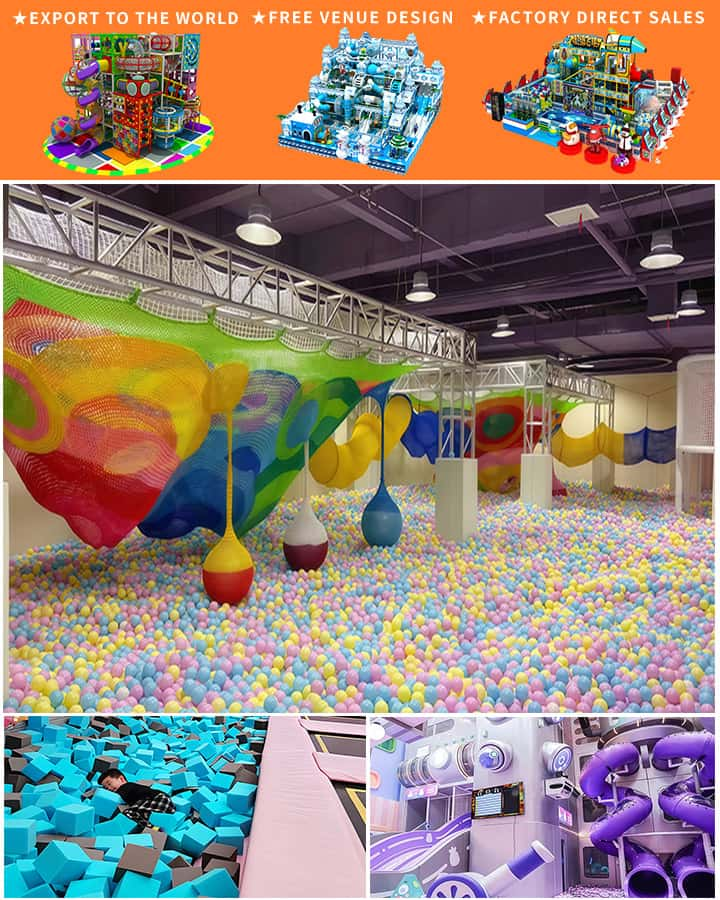Designing an indoor play area for kids can transform a mundane space into an imaginative wonderland. Whether you have a dedicated room or simply want to carve out a corner of your living space, creating a fun and safe environment for children is both exciting and rewarding. Here are some key considerations and creative ideas to help you craft the ultimate indoor play area for kids.
1. Safety First
Before diving into the design elements, safety should be your top priority. Ensure that any furniture, toys, and equipment are age-appropriate and free from sharp edges or small parts that could pose choking hazards. Use non-toxic materials and secure heavy items to prevent accidents. Install soft matting or foam padding on the floor to cushion falls, especially in high-traffic areas like slides or climbing structures.
2. Multifunctional Furniture
To maximize space, consider investing in multifunctional furniture. For example, a play table with built-in storage cubbies can double as a reading or crafting station. Loft beds with play areas underneath or bookshelves integrated into the wall can provide both functional storage and additional play surfaces without taking up extra room. Foldable desks and chairs can easily be stowed away when not in use, allowing the space to be repurposed for other activities.

3. Themed Play Zones
Kids love themed spaces that stimulate their imaginations. Design different zones within the play area based on popular themes such as pirates, princesses, space exploration, or a mini jungle safari. Each zone can feature decor, toys, and activities related to its theme, creating a rich and immersive experience. Consider using color-coded mats or rugs to visually separate each themed area.
4. Educational Elements
Incorporate educational elements to make learning fun. A chalkboard wall or easel can encourage drawing and creative thinking. Interactive whiteboards or magnetic boards can be used for games and lessons. Shelves filled with books and educational toys can foster a love for reading and exploration. Consider adding alphabet puzzles, counting games, or science kits to keep young minds engaged and curious.
5. Physical Activity Corner
Kids need physical activity even when indoors, so include a space for active play. Install a small climbing wall, balance beam, or mini trampoline to promote physical development and burn off some energy. A ball pit, tunnels, or obstacle course can also provide hours of entertainment and exercise. Just ensure there’s enough space around these activities to prevent collisions and injuries.
6. Quiet Time Nook
Amidst the excitement, it’s important to have a cozy nook where kids can relax and unwind. Create a reading corner with plush pillows, a small bookshelf, and dimmable lighting. A tent or canopy can provide a sense of privacy and comfort, making it an ideal spot for naptime stories or quiet play with favorite dolls and stuffed animals.
7. Personal Touches
Finally, involve your child in the design process to make the play area truly their own. Ask for their input on colors, themes, and activities they enjoy. Display their artwork or crafts on the walls, and incorporate personalized elements like name plaques or custom-made decorations. This not only makes the space more enjoyable but also boosts their confidence and creativity.
Conclusion
Building an indoor play area for kids requires thoughtful planning and a touch of creativity. By prioritizing safety, incorporating multifunctional furniture, designing themed zones, including educational elements, providing space for physical activity, creating a cozy nook, and adding personal touches, you can create a dynamic and engaging environment that supports your child’s growth and imagination. With a little effort, your indoor play area will become a cherished space where memories are made and adventures begin.




